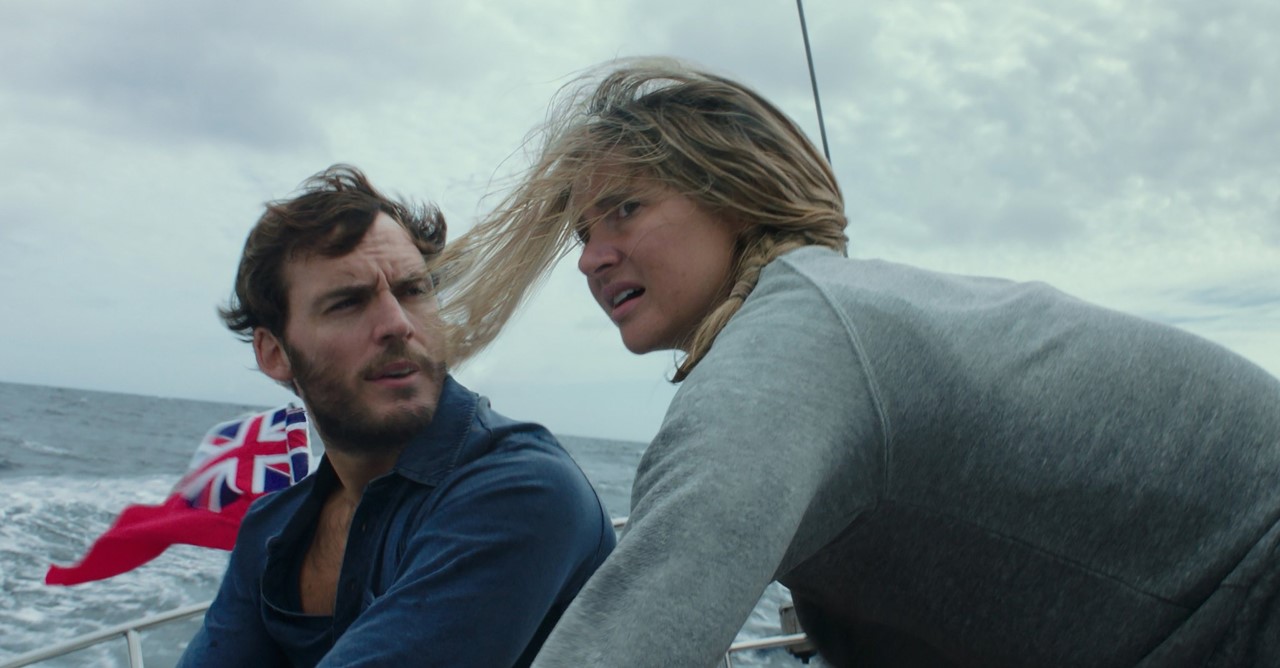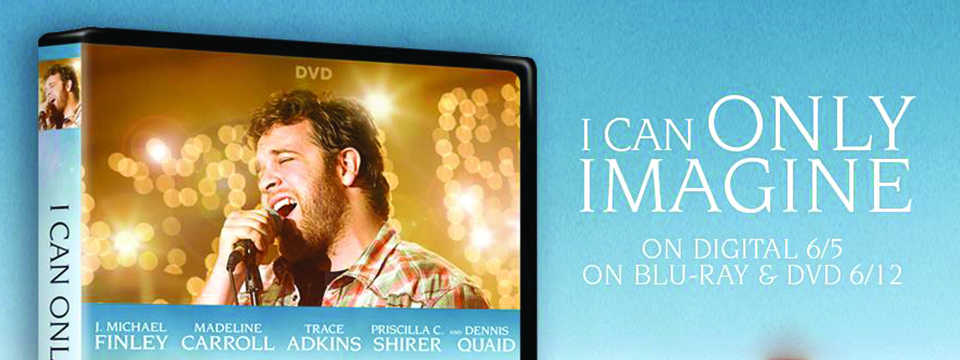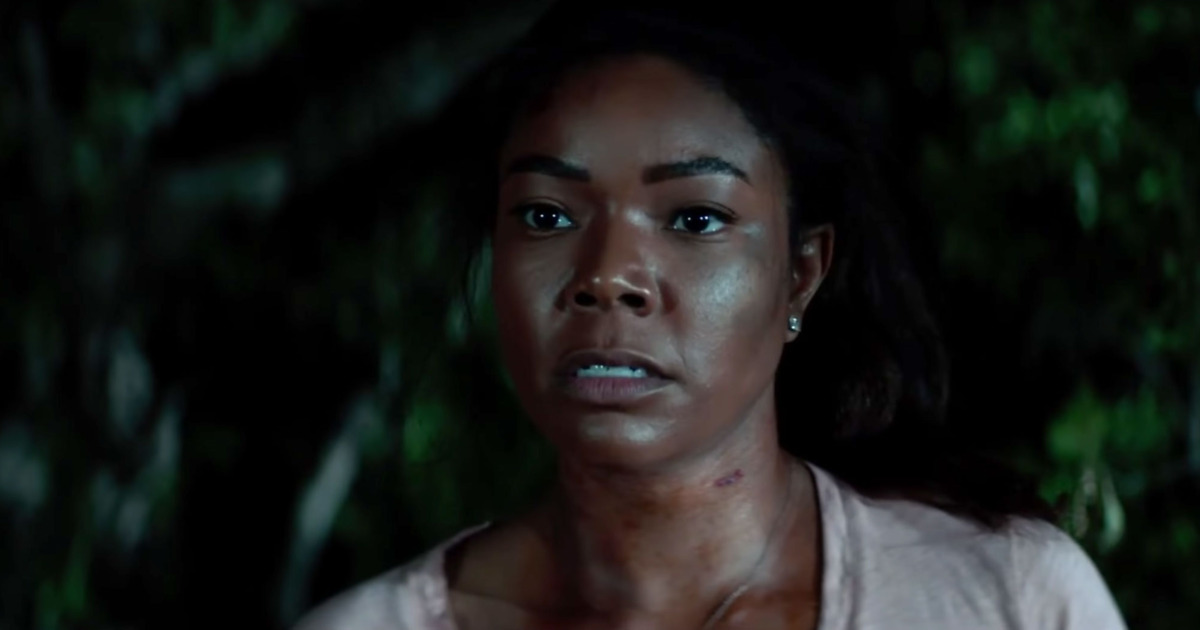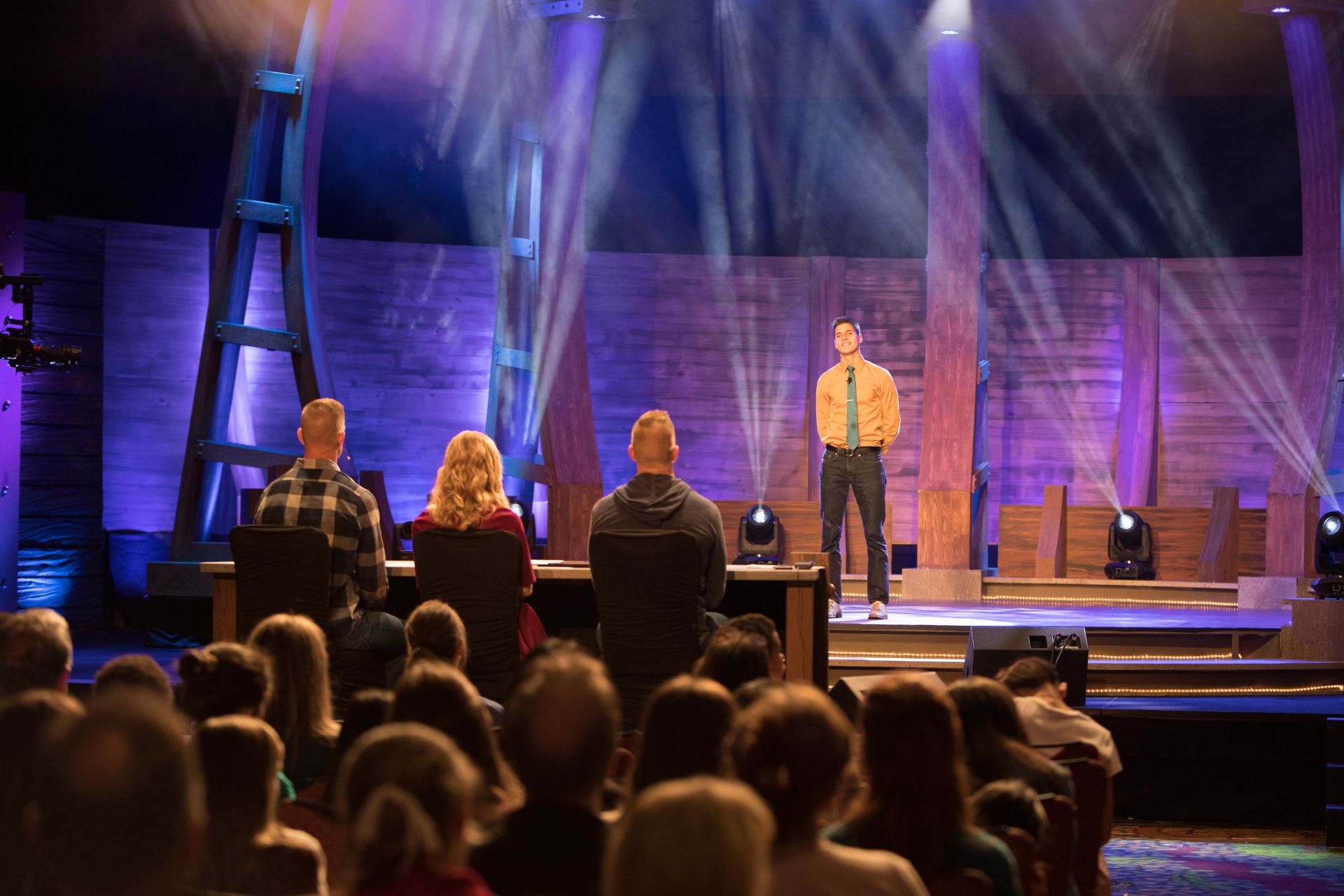
by Michael Foust | Jun 1, 2018
‘Adrift’ is but the latest ocean-survival movie out of Hollywood, but this time it carries with it plenty of discussion questions, too.
Tami Oldham is a cheerful 20-something woman who doesn’t have a profession, but that’s OK. She’s going to travel the world anyway.
Her current stop is in the Pacific island of Tahiti, where she makes money from odd jobs so that she can get to the “next place” and discover her next adventure.
Don’t expect her to go back to her home city of San Diego, either. She’s going there only after she’s circled the globe.
It seems like a tall task until she meets a young British man named Richard, who has a sailboat and who also has a passion for travel on the high seas. They fall in love and decide to embark on an adventure across the Pacific – an adventure that could be the beginning of a lifetime together.
Of course, life rarely goes as planned. They sail into a hurricane. Then their boat is capsized. Then Richard goes missing and the inexperienced Tami is forced to fight for survival while she searches the water for her companion.
Adrift (PG-13) opens this weekend, giving us a drama that is made more exciting because it is based on a true story of a 1983 tragedy that occurred during Hurricane Raymond.
It stars Shailene Woodley (the Divergent trilogy) as Tami and Sam Claflin (Me Before You, The Hunger Games: Catching Fire) as Richard, and was directed by Baltasar Kormákur, who also helmed the nature-related films Everest and The Deep.
Adrift is but the latest ocean-survival movie out of Hollywood, following 47 Meters Down (2017), The Shallows (2016), and The Finest Hours (2016). But in this film, there are no sharks and no huge explosions as found in those earlier films. Instead, we have a woman determined not to die alone at sea. That type of story always attracts me, and this time it carries with it plenty of discussion questions, too. More on that in a moment.
Warning: minor spoilers!
(Scale key: Minimal, moderate, extreme)
Violence/Disturbing
Moderate. We see the sailboat capsize, and then we see Tami and Richard’s injuries. Tami has head wounds including a gash to the head, while Richard has an open wound on his shin. We see Tami stitch up her own wound, and we watch her treat Richard’s gash.
Sexuality/Sensuality/Nudity
Moderate. Tami wears spaghetti strap shirts, bikinis and a one-piece swimsuit during the film, although the camera doesn’t ogle her figure. She and Richard share a few kisses, but there are no bedroom scenes. They get engaged in the middle of their voyage. We also briefly see Tami partially nude during a heavy rain, post-hurricane.
Coarse Language
Moderate. About 16 coarse words: OMG (8), misuse of “God” (2), s—t (2), d—n (1), f-word (1), misuse of “Christ” (1) and h-ll (1).
Other Positive Elements
Despite her inexperience, Tami shows the moxie needed to pilot the boat and survive. There’s little talk about spiritual matters, although in referencing a specific flower she tells Richard that “God put these on earth to mask the smell” of trash.
Other Stuff You Might Want To Know
Tami smokes. We also see she and Richard drink wine. We hear her throw up (We see only a glimpse of it). We learn that Richard’s mom committed suicide when he was seven.
Life Lessons
Adrift delivers lessons on the will to survive, determination and human ingenuity.
“We can do this!” she says at the beginning, not knowing what to expect next.
Also, Tami sees purpose in the wreck – even going so far as to say she doesn’t regret it happening. Adrift isn’t a Christian movie, but finding the good in the bad (Rom. 8:28) has its foundation in Scripture.
Worldview
Tami Oldham isn’t the first person to float through her 20s, searching for what’s important in life. She simply learned the lesson in a very unique way.
At the beginning of the film she lives life with abandon and risk, seemingly requiring a constant adrenaline rush to live. Sure, Tahiti is fine, but she wants to get to the next stop and the next island. After she jumps off a dangerous cliff, Richard tells her: I’ve never met anyone like you.
She wanted to sail the world, but it took her being stranded at sea for 40-plus days to appreciate the simple things in life: water, food and family. Oh yeah, and peanut butter.
The movie also includes a not-so-subtle message about the need for a good home life. Neither Tami nor Richard had a normal childhood. Tami’s mom took her to a bar at age 16. Richard’s mother killed herself. Were Tami and Richard sailing the world to escape their sad and abnormal upbringing? The movie certainly implies that.
What Works
The movie’s use of flashbacks to tell the story of Tami and Richard. Instead of telling the story chronologically, the movie tells us about them little by little, through flashbacks.
Also, the makeup department deserves an award. Actress Shailene Woodley really did look like she’d been at sea for 41 days.
What Doesn’t
The ending. I didn’t hate it, but I wasn’t crazy about it, either.
Discussion Questions
- Why do you think Tami wanted to sail the world instead of settling down at home?
- What did Tami discover about life during her time at sea?
- Why do you think Tami said she didn’t regret meeting Richard?
- What did you think about the ending?
Entertainment rating: 3 out of 5 stars. Family-friendly rating: 3 out of 5 stars.
Rated PG-13 for injury images, peril, language, brief drug use, partial nudity and thematic elements.

by Michael Foust | May 30, 2018
EDITOR’S NOTE: This monthly series, “5 Family-Friendly Things,” spotlights five family-friendly entertainment choices on DVD, streaming or television.
March was a banner month for faith films, and some of those same movies are set to hit the home entertainment market in June, giving families who didn’t see them the first time a chance to watch.
I Can Only Imagine (PG) arrives on digital platforms June 5 and then on a Blu-ray/DVD/digital combo package June 12, while Paul: Apostle of Christ (PG-13) is set to release digitally June 12 and then on its own Blu-ray/DVD/digital combo pack June 19.
They are among the most inspiring movies I’ve ever watched, and they share the No. 1 position on this month’s edition of “5 Family-Friendly Things.”
But don’t take my word that these are stellar movies. Moviegoers gave I Can Only Imagine a rare A+ in CinemaScore’s exit polling and Paul: Apostle of Christ an A-.
I Can Only Imagine recounts the childhood, teen and young adult years of singer Bart Millard (of the band MercyMe), who grew up in an abusive home but saw his father come to Christ late in life. His father’s conversion inspired Millard to write the popular song I Can Only Imagine. Jon and Andrew Erwin, the brothers behind the films Woodlawn and Mom’s Night Out, directed it.
Paul: Apostle of Christ is part biblical fact and part biblical fiction, telling the story of the Apostle Paul’s finals days in prison as Christians throughout Rome are persecuted. It’s a fascinating peak at the early church, with famous biblical names such as Luke, Priscilla and Aquila making an appearance.
Caution, though, is advised for young viewers of both films. In I Can Only Imagine, the scenes involving Bart and his father are intense. Paul shows us persecution, including Christians being burned alive and used as torchers.
Also worth watching:
- ‘A Little Help with Carol Burnett’
This original Netflix series stars the legendary actress as her adult guests seek life advice from children. For example, actress Lisa Kudrow (Friends) asks the panel what they’d do if they double booked a lunch commitment. (Would they cancel one of the commitments? Should they ask both people to come to the same lunch? The series is rated TV-G, although some of the jokes are a little adult-oriented and one of the episodes (Episode 2) includes a man who had cohabitated with a woman. (Episode 2 also includes Candace Cameron Bure, a Christian.) Still, I enjoyed the three shows I watched.
- ‘Little Women’
Based on Louisa May Alcott’s classic novel, this adaptation aired on the BBC in 2017 and on PBS in May of this year, and is now available on Blu-ray and DVD. It tells the story of four daughters living in Massachusetts whose father is away fighting in the Civil War. If you like clean period dramas, then you’ll probably enjoy this one. No sexuality or language.
- ‘Bobby Kennedy for President’

Photo credit: Netflix
Also on Netflix, this four-part documentary follows the rise of Robert F. Kennedy, who escaped the shadows of his brother and seemed destined for the Democratic nomination of 1968 until an assassination ended his life. Kennedy was known as a liberal, although some of his beliefs would be embraced today by the Right. Netflix’s worthless ratings gave the series a TV-MA label – the same rating they apply to R-type content – but it contains no sexuality and only mild language. We do see photos of Kennedy’s dead body. The series is fine for most teens and maybe some tweens.
- Kids’ programming on PureFlix and Dove Channel
If you’ve given up on Netflix, Amazon Prime and Hulu, then give these faith-oriented streaming services a try. Each has their strengths. PureFlix has series such as Greatest Heroes and Legends of the Bible, Friends and Heroes, Character Builders and Torchlighters, while Dove Channel offers Greatest Heroes and Legends, Davey and Goliath, 321 Penguins and Hermie. Of course, each also offers faith- and family-friendly content for adults. Visit PureFlix.com or DoveChannel.com to learn more.
Headline photo credit: Provident

by Michael Foust | May 25, 2018
Solo: A Star Wars Story (PG-13) opens in theaters this weekend, becoming the 10th Star Wars movie and the second stand-alone film. But is it OK to take the children?
Han Solo is a crafty young man living in a lawless society, although he thinks he’s discovered his path to a better life.
“I’m gonna be a pilot,” he says.
There’s only one problem: He doesn’t own a ship.
So he visits the nearest Empire recruiting office to sign up for flight school, which will teach him how to be an aviator while he learns other skills and helps restore peace and prosperity to the galaxy. Or so he’s told.
As we’ve learned over the years, nothing goes as planned in Han Solo’s life, and soon he’s caught up in a risky burglary plot that could either kill him or make him rich. Perhaps if he’s fortunate, he’ll even find a ship along the way.
Solo: A Star Wars Story (PG-13) opens in theaters this weekend, less than six months removed from the last Star Wars film and three years after Disney rebooted the franchise. Solo is the 10th Star Wars movie and the second stand-alone film – meaning it doesn’t follow the chronological sequence of the main saga. It tells the story of a young Han Solo and falls about 20 years prior to events in Star Wars: A New Hope (1977).
It stars Alden Ehrenreich (Hail, Caesar!) as Han Solo, Woody Harrelson (Hunger Games) as his companion Beckett, Emilia Clarke (Me Before You) as his romantic interest Qi’ra, and Donald Glover (The Martian) as a young Lando Calrissian.
Most movie reviews dive into the details of a plot. This review, though, will be different. That’s because Star Wars fans – like me – often want to enter the theater with as little knowledge as possible. To them, a Star Wars movie is like a Christmas present, and they want to be surprised. Yet they also want to know the answer to the ever-so-important question: Is it OK to take the kids?
If that’s you, then here’s what you need to know: Solo is as violent as Rogue One. It has no sexuality but does include five kissing scenes. It also has around 11 coarse words – a record for a Star Wars film.
If you need more information, then keep reading.
(Scale key: Minimal, moderate, extreme)
Violence/Disturbing
Moderate. Like other Star Wars films, Solo contains plenty of laser blaster and battle scenes, even if it’s mostly bloodless. We see someone get hit in the chest with an instrument and then punched in the chest. A droid is run over by a vehicle. We watch a World War II-type battle scene, minus the blood (We do see explosions and shooting.) A heist of a train involves shooting, punching and explosions. A character detonates a bomb, sacrificing herself to save everyone else. A character dies in close hand-to-hand combat, and we see his body.
Sexuality/Sensuality/Nudity
Minimal. Five kissing scenes, including one that lasts more than a second or two. One female character wears a somewhat revealing dress. No bedroom scenes or discussions of sex.
Coarse Language
Minimal. I counted 11 coarse words: h-ll (8), d—n (2), a—1). We also hear “screw” (1) and “butt” (1). That’s not a lot of words for a PG-13 film, but nevertheless is the most ever in a Star Wars movie – and nearly double the previous high of six in The Last Jedi. Han curses some, but it’s mostly Beckett.
Other Positive Elements
Han Solo, despite his desire to be a bad guy, makes his share of good choices (See “Worldview,” below).
Other Stuff You Might Want To Know
We see characters drink alcohol. We also watch some of the primary characters gamble for money and possessions. The Force is not mentioned or practiced in the film. Some of the main characters lie to get ahead.
Life Lessons
Solo gives us lessons on bravery, teamwork and doing the right thing, although many of the film’s lessons serve as warnings on the pitfalls of sin and crime. Speaking of that …
Worldview
Han Solo is an antihero – that is, a protagonist who lacks the conventional qualities of a hero. He often does the right thing, even if he is attracted to the criminal life.
“I’m an outlaw,” he says.
“You are the good guy,” a friend retorts.
He hangs out with a few bad apples in Solo, and in spite of their tough demeanor, they desire for a normal life free from running from debtors. They simply want to start anew. As one of them says, “Perhaps he can get out of this crazy lifestyle of robbery and learn how to play a musical instrument!”
But they’re stuck in a spinning cycle of crime, whereby each bad deed is covered by another one.
The Bible says the law is written on our hearts (Romans 2:15). In other words, God designed us so that we will never be satisfied with a life of crime – even that of a smuggler in Star Wars. The life of Han Solo may sound fun, but in the real world, it’s a miserable existence.
Still, Han makes lots of good choices, too – choices that even his future friend Luke Skywalker would endorse.
The movie also raises the ethical question: Is it OK to steal from the Empire? Sometimes the answer is obvious. Other times it’s not.
Sponsors
Denny’s, Esurance, General Mills, Nissan and Symantec Corp are among the sponsors for Solo.
What Works
Surprisingly, the music. Unless I missed it, the rock music heard in the trailer isn’t in Solo. In its place, we get the orchestral music that makes a Star Wars movie so great.
Additionally, two of the action scenes stand out. One is as good as any action sequence in The Empire Strikes Back.
What Doesn’t
The end of the film drags. Compared to the last three Star Wars movies, it was a dud.
Where Does It Rank?
My updated Star Wars film rankings: 1a. The Empire Strikes Back, 1b. A New Hope, 3. The Force Awakens, 4. The Last Jedi, 5. Return of the Jedi, 6a. Rogue One, 6b. Solo, 8. Revenge of the Sith, 9. The Phantom Menace, 10. Attack of the Clones.
Discussion Questions
- Was it morally permissible for Han and his friends to rob the train – and then to steal from the planet?
- Would you want to be Han Solo? Why or why not?
- Name three good deeds of Han Solo in the film. Name three bad ones.
- Is it OK to cheer for an antihero? How so?
Entertainment rating: 3.5 out of 5 stars. Family-friendly rating: 3 out of 5 stars.

by Michael Foust | May 11, 2018
Breaking In (PG-13) opens this Mother’s Day weekend, giving us the story of a mom who will do anything to rescue her kids, who are held hostage.
Shaun Russell is a loving, middle class mom who’s simply trying to teach her two children to know right from wrong – and to respect authority, too.
Her life, though, is interrupted when her wealthy father – the dad she never got along with – is struck and killed while jogging. She’s left with a big mansion, a big piece of land, and an even bigger headache.
Wanting to forget her past and escape her father’s legal troubles, she opts to sell the place. But first, she and her children will visit it and gather a few things, including personal mementoes.
The plan quickly goes awry. Upon arrival, she discovers the alarm has been tripped. Minutes later, her kids are taken hostage by three guys who want her father’s money, and she’s being chased through the woods by a fourth guy who wants her dead.
Can she find a way to save her own life – and the lives of her children, too?
Breaking In (PG-13) opens this Mother’s Day weekend, giving us the story of a mom who will do anything to rescue her kids. It stars Gabrielle Union (Bring It On, Bad Boys II) as Shaun Russell, Ajiona Alexus (13 Reasons Why) as her teen daughter Jasmine, Seth Carr (Black Panther) as her young son Glover, and Billy Burke (Twilight) as the lead bad guy, Eddie.
Breaking In has its fun-and-tense moments but plenty of ultra-violent ones, too. That’s because the movie is a combination of Rambo, Mission Impossible and every “mama bear” story you’ve imagined.
It’s what most parents would try if their kids were held hostage by four bad dudes, miles and miles from police. Still, the film’s violence had me wondering: How close was it to being rated “R”?
Let’s examine the details.
Warning: minor/moderate spoilers ahead!
(Scale key: Minimal, moderate, extreme)
Violence/Disturbing
Extreme. With plenty of male-on-female violence (and vice versa). We see someone stabbed by a wine glass shard. A female character is choked and dragged by her hair (She survives). An unexpected visitor to the house is killed when her throat is slashed (We don’t see it). The mom is savagely beaten in the film’s final scenes. A child shoots a gun at a bad guy. A bad guy gets run over by a vehicle. A knife is placed on the teen daughter’s throat. The children are tied up, with tape over their mouths. Another unexpected visitor to the house is beaten. We see someone shot and killed. We see someone get stabbed and killed (We see the bloody knife). We see dead bodies, too.
Sexuality/Sensuality/Nudity
Minimal. A sex act is referenced but not explicitly described.
Coarse Language
Moderate. About 30 coarse words: s—t (11), b—ch (6), h-ll (5), GD (2), SOB (1) “swear to G-d” (1), misuse of “Jesus” (1), d—n (1), f-word (1), a— (1).
Other Positive Elements
From the film’s opening scenes, it’s obvious the mom unconditionally loves her children. When the teen daughter seems concerned for her mom’s emotional state, the mom responds, “It’s not your job to worry about me. It’s my job to worry about you.” We also see the mom express love for her husband (via a phone call), and the siblings demonstrate their love for one another.
The robbers see this love and decide to take advantage of it. Eddie says, “Moms don’t run – not when their babies are in the nest.”
Life Lessons
Breaking In gives us lessons in parental love, bravery and self-sacrifice. One of the bad guys – Duncan – also offers a lesson on the importance of parents when he tells Shaun, “I wish I had a mother like you.”
Worldview
Would you kill someone to protect your children? That’s the question confronting moviegoers who watch Breaking In. The plot leaves pacifists little wiggle room. The kids are tied up, the robbers are violent, and the police are an hour or more away. We know that Scripture gives the government the right to kill in defense of the innocent (Romans 13), but what about when police aren’t around? By the time help would have arrived in Breaking In, the children might be dead.
Perhaps there was an alternative, as seen in the movie Captive, which was based on the real-life story of a woman who read The Purpose Driven Life to a robber. The Gospel indeed is “sharper than any two-edged sword” (Heb. 4:12).
But if words fail, Scripture allows such an action. We are to “rescue the weak” (Psalm 82:4) and “rescue those who are being taken away to death” (Prov. 24:11). Scripture permits killing in self-defense (Exo. 22:2). Further, we are to count others more significant than ourselves (Phil. 2:3). In Breaking In, we see the mom do exactly that. She’s even willing to die so that her kids might live.
What Works
The slow-motion, room-to-room chase scenes. For much of the film, the tension is thick.
Additionally, it is nice to see an intact, middle-class minority family portrayed on the big screen – and in the main roles, too. Most of the bad guys were white. It’s a role reversal from what historically has been the opposite case in Hollywood.
What Doesn’t Work
The excessive violence. The movie would have worked better with more tension and less blood. Toward the end, the violence got in the way of the plot.
The film continues the troubling trend of male-on-female violence. Yes, the males here are the bad guys, but it’s still unsettling. Tone it down, Hollywood.
Discussion Questions
- Would you kill to protect your children? Do you think Scripture allows it?
- Could you have done what the mom did? Why or why not?
- What do you think about male-on-female violence in movies, even if the male is the villain?
Entertainment rating: 3 out of 5 stars. Family-friendly rating: 2.5 out of 5 stars.
Breaking In is rated PG-13 for violence, menace, bloody images, sexual references, and brief strong language.

by Michael Foust | May 9, 2018
Editor’s note: This new monthly series, “5 Family-Friendly Things,” spotlights five family-friendly entertainment choices on DVD, streaming or television.
How long would it take you to memorize five Bible verses? Fifty Bible verses? Even 100 Bible verses?
What about nearly 1,000?
Incredibly, that’s what some contestants in the National Bible Bee Competition Show did. The six-week series is broadcast yearly by the National Bible Bee and premiered April 24 on Facebook Live, with a new episode going live each Tuesday at 8 p.m. Eastern through May.
The National Bible Bee Competition Show is No. 1 on May’s edition of “5 Family-Friendly Things.”
I watched the debut with my wife and 10-year-old son, not knowing if it would keep his attention. But by the end, he was engrossed in the competition and ready for the next week’s episode.
It is co-hosted by Emeal Zwayne, president of Living Waters Publications, along with Jason and David Benham (formerly of HGTV) and Hannah Leary, who won the first season.
The series involves three age groups (7-10, 11-14 and 15-18) competing for a total of $100,000 in prize money and is as convicting as it is inspiring. Sometimes, you even feel sorry for the contestants – like when one was eliminated because she said “was” instead of “is.”
Watch it at BibleBee.tv. (A Facebook account is required. Click on “Videos” to access the show archives.)
Also worth watching:
- ‘Monster Trucks’
This quirky PG comedy bombed at the box office but was a recent family-friendly hit in my home. Now on Amazon Prime, it tells the story of a friendly octopus-looking monster that becomes the “engine” for a teen boy’s truck. It’s the type of goofy plot that would have made for a hilarious 1970s Disney flick, but it hit theaters four decades too late — in 2017. It has no language. No sexuality. Not even a kiss!
- Amazon Prime’s kid’s Christian shows
Netflix and Hulu each have their strengths for streaming fans, but for children’s Christian or spiritual content, nothing beats Amazon Prime, which has at least three series that my children have watched recently: Torchlighters, Superbook and Davey and Goliath. Hopefully, Netflix and Hulu will catch up.
- Netflix’s new Christian movies
Amazon Prime may shine with its children’s faith content, but Netflix wins in the grown-up category, including with two new selections: Is Genesis History? and A Question of Faith, each of which were in theaters in 2017. Netflix also has The Case for Christ and Little Boy. Search for “Christian” and you’ll discover similar content.
- ‘Lost in Space’
In this new Netflix remake of the 1960s series, the Robinson clan gets stuck on a planet and tries desperately to survive. It’s rated TV-PG and contains mild language – around two to three words each show — so caution is advised. It’s not entirely family-friendly, but it’s oh-so-close. I watched the first two episodes and enjoyed it.





